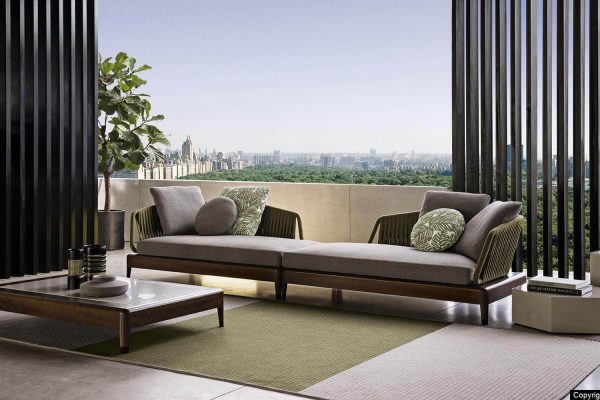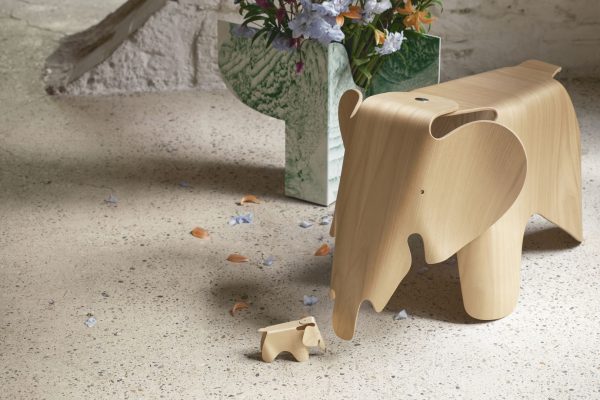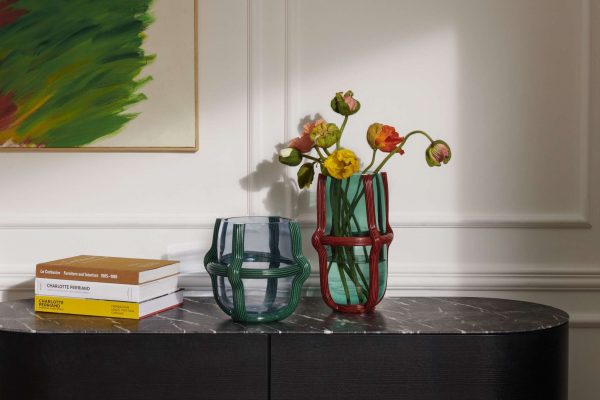Interior Design in Milan with Sag80 : The Story
Beginning in 1980 in Milan, Sag’80 has made interior design and custom-designed furniture its main mission, profoundly rethinking the way home and work environments are designed and set up, which now see the customer’s needs in the foreground.
In order to develop this philosophy efficiently,
Sag’80
today relies on a competent team of planners, interior designers and architects, who work in synergy to interpret the client’s requests and transform what they imagine into reality, researching the most suitable solutions proposed by the best Italian and international design brands.
Decisive to Sag’80’s mission is its presence in the territory through several showrooms in which clients can speak in person to the firm’s consultants, being guided step by step in interior design.
SAG80 the Interior Design and Architecture Studio in the Heart of Milan
Sag’80 has been cultivating the ambition since 1980 to guide its clients in designing custom-made environments that exactly reflect the tastes and, above all, the needs of the people who are going to live there.
The birth of Sag’80 should be framed in a context of great expansion of the furniture sector, which since the 1980s particularly affected precisely the Milan and Lombardy area, with an increasing number of brands entering the market contributing to enhance the concept of Made in Italy.
Sag’80 thus had the merit of understanding how, in the face of an increasingly varied and high-quality offering, customers needed to navigate their way through the many solutions available to them, not always possessing for themselves the tools to understand which furnishings and techniques were best suited to meet their needs.
This was the origin of Sag’80’s philosophy of accompanying its users step by step in the creation of customized environments thanks to a multidisciplinary team that could act as a link between the client’s own ideas and the most prestigious design brands capable of turning them into reality.
Realization of an Interior Design for a Kitchen in Milan with Sag80
In the heart of Milan, the epitome of Italian elegance and design, Sag80 is dedicated to creating interior designs that embody luxury and sophistication.
Interior design for a kitchen, in addition to being the epitome in the field of planning, requires special attention to detail, space functionality and aesthetic harmony.
With these few lines,want to illustrate the main useful and unavoidable steps to realize your interior design with our Team of interior and luxury architects:
-
Initial Consultation: Meeting with the client to discuss ideas, style preferences, functional needs, and budget.
-
Survey and Survey: Accurate assessment of the existing kitchen, precise measurements and space analysis.
-
Concept Design: Development of creative ideas, innovative solutions and definition of the stylistic concept, harmonizing the essence of Italian design with the needs of the client.
-
Project Presentation: Presentation of floor plans, renderings and material samples, allowing the client to visualize the final design.
-
Approval and Review: Discussion of project details and determination of any changes based on client feedback.
-
Project Implementation: Supervision of renovation work, coordination with craftsmen and suppliers, and quality control to ensure a flawless result.
Bringing to life a kitchen that reflects the customer’s taste, style, and needs is an art that our luxury interior designers master with passion and dedication. At Sag80, each kitchen project is a journey into the world of luxury and beauty, a unique experience that celebrates the sophistication of Made in Italy design.
Investment in high-end interior design is an added value that elevates lifestyle and living quality, transforming the kitchen into an environment where elegance blends with functionality, creating a warm and welcoming atmosphere.
Interior Design Milan : Frequently Asked Questions (FAQ)
How much does interior design in Milan cost?
The cost of interior design in Milan can vary widely, depending on the complexity of the project and the experience of the designer or design firm. Sag80 offers exclusive design solutions, created to reflect the uniqueness and elegance of your space, with customized quotes.
How much does an interior designer in Milan cost?
The cost of an interior designer in Milan is based on the complexity of the project and the reputation of the designer. Sag80 offers consultations with internationally renowned designers, ensuring luxurious service and impeccable professionalism.
Who designs the interior of a house?
The interior of a home can be designed by an architect or a qualified interior designer. Sag80 is the benchmark for all those who seek the highest expression of design and art in furniture.
How to choose an interior designer?
Choosing an interior designer requires consideration of their style, experience, and portfolio. Sag80 guides you in selecting the best professionals in the field, ensuring sophisticated and unique results.
What can an interior architect do?
An interior architect can transform spaces, creating harmonious and functional environments that reflect the client’s taste and needs. Through Sag80, you will have access to experienced and creative interior designers.
Who designs the rooms?
Rooms can be designed by interior designers or architects, who through their artistic and technical vision, bring enchanting and refined spaces to life. Sag80 will accompany you in creating your ideal environment.
How to design the interior of a house in Milan?
To design the interior of a home in Milan, it is essential to turn to professionals in the field such as those who collaborate with Sag80, so as to combine aesthetics, functionality and luxury in the best possible way.
What is the difference between an Architect and a Surveyor?
The architect is primarily concerned with design and planning, while the surveyor has more technical and cadastral skills. Sag80 collaborates with both professionals to ensure a complete and accurate service.
What is the difference between an Architect and an Interior Designer?
The architect focuses on the structure and functionality of the building, while the interior designer is primarily concerned with the aesthetics of the interior. Sag80 is the place where these worlds meet, creating unique synergies.
When do you need an interior designer in Milan?
An architect is needed when new buildings are constructed or significant renovations are made. With Sag80, you will be assured of the advice of world-renowned architects.
Why turn to an Architect?
Contacting an architect is essential to ensure that the design meets building codes and that the spaces are functional and aesthetically pleasing. Sag80 offers you the opportunity to create unique projects with attention to detail.
When is an interior designer needed?
An interior designer is essential when you want to create harmonious, elegant and personalized environments. Turning to Sag80 means choosing excellence in interior design.
Why turn to an interior designer?
An interior designer can transform spaces, improving the quality of life and reflecting your style and personality. With Sag80, you will have a unique and refined experience in the world of luxury design.
Who collaborates with the architect to design a building?
In designing a building, the architect collaborates with engineers, surveyors and other specialists. Sag80 offers you a network of highly qualified professionals to carry out complex and aesthetically appealing projects.
Who collaborates with the architect on an interior design?
For an interior design, the architect can collaborate with interior designers, craftsmen, and other experts in the field. Sag80 is your ideal partner, combining diverse skills to create luxurious interiors with great character.
Interior Design Milan : Design with Our Team of Architects and Interior Designers
If you are looking for an architectural firm in Milan for interior design that can offer you comprehensive advice, rely on Sag’80 to your design, means enjoying direct and detailed assistance both on the interior design side and on the technical choices and the guarantee that you will be able to realize your interior design with the best quality on every single detail.
In fact, for this very reason, Sag80 relies on a team that gathers some of the best architects, as well as a variety of other professionals, to take meticulous care of every phase of the project, starting from the preparation of the working plan to the interior design with the best selected brands.
Whether it is an interior design for a residential home or a commercial project for offices, hotel or shopping center ,you can be sure that you have furnished each room as functionally and consistently as possible, respecting individual needs and personal aesthetic tastes.
Interiors projects in Milan and beyond
The team of architects, interior designers and planners ensures high attention to detail at every stage of the project. Check out our most successful interior projects for ideas and inspiration.
We undertake interior design works for both residential projects and commercial spaces as a contractor, helping individuals, designers and companies.
Make an appointment and come visit our interior design showrooms in Milan .
Sag80 is also an authorized dealer of the best interior design brands made in italy, including Molteni, Dada, Arclinea, Maxalto, Vitra, Arflex, B&B Italia, Cassina, Minotti, Boffi, Citterio, Zanotta, Paola Lenti and many more. Discover the more than 100 brands we use to best design every furniture solution.
More content designed for you
Here are some links to articles you may be interested in learning more about :
- 20 design office ideas and complete selection guide
- Interior Design Luxury Furniture Made in Italy
- Interior Design for Living Rooms the Guide
- Interior Design for your Home
- Interior Design Ideas and Trends
- The Best Interior Architects
- Ideas for Modern Luxury Interior Design Furniture
- Interior Design for Modern Style Living Rooms
- Contract Interior Design Milan : The interior design studio for commercial spaces
If you are interested in our achievements here is a list of our most recent designs in multiple areas :
- Case Study Interior Design for House by the Sea
- Case Study Interior Design Mountain House
- Case Study Interior Design for Hotel on Lake Como



